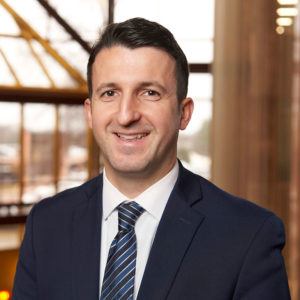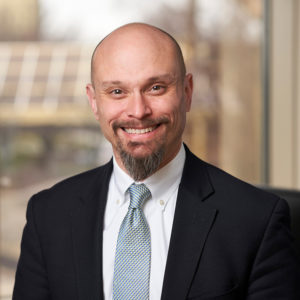On June 23, 2021, the Supreme Court of the United States issued a decision in the long-anticipated student free speech case, Mahanoy Area School District v. B.L.,[1] involving a high school cheerleader who was suspended from the team for her Snapchat post using the F-word repeatedly and posting a picture of her making a vulgar gesture after not making the varsity cheer team.[2] The Court found that the school district violated the student’s First Amendment rights when it disciplined her for the off-campus social media post.
The Mahanoy case centered on the Supreme Court decision in Tinker v. Des Moines Independent Community School District, 393 U.S. 503 (1969), which held that public school officials could regulate speech that will cause a material and substantial disruption of school activities. The question raised in Mahanoy was whether the Supreme Court’s decision in Tinker applies to student speech that occurs off campus (in other words, not on district property).
The Court’s answer? Maybe. The Court did not explicitly state that Tinker applies, but it used Tinker’s considerations in its analysis. The Court recognized that there are some instances in which a school may have significant interests in regulating speech, even if it occurs away from school, and gave the following examples: “serious or severe bullying or harassment targeting particular individuals; threats aimed at teachers or other students; the failure to follow rules concerning lessons, the writing of papers, the use of computers, or participation in other online school activities; and breaches of school security devices.”
But the Court cautioned that schools have “diminished” leeway to regulate off-campus speech as opposed to speech occurring at school. The Court explained three features of off-campus speech that limit a school district’s ability to regulate it:
- The school is not always standing in loco parentis. This doctrine refers to school administrators standing in the parents’ place in certain circumstances when it comes to protecting, guiding, and disciplining a student. The Court explained that speech occurring away from school typically falls “within the zone of parental” responsibility, whereas speech at school tends to be a school responsibility.
- Student speech should not be monitored 24/7. From the student’s perspective, if both on-campus and off-campus speech can be regulated, then “all the speech a student utters during the full 24-hour day” could be subject to regulation. Because students do not shed their constitutional rights at the school house gate, “courts must be skeptical of a school’s efforts to regulate off-campus speech, for doing so may mean the student cannot engage in that kind of speech at all.” Additionally, a district bears a “heavy burden” when a student engages in political or religious speech that occurs outside school or a school program or activity.
- Schools themselves have a “strong interest” in protecting a student’s off-campus expression. The Court describes public schools as “nurseries of democracy” that should protect the “marketplace of ideas.” Schools have a strong interest in ensuring that future generations understand the importance of the free exchange of ideas and fostering an informed public opinion. Protecting student expression “must include the protection of unpopular ideas, for popular ideas have less need for protection.”
Given the many different kinds of off-campus speech and potential justifications for regulating it, the Supreme Court refused to create a bright-line test for regulating speech that occurs away from school district property. Instead, the Court noted that “[w]e leave for future cases to decide where, when, and how these features mean the speaker’s off-campus location will make the critical difference.”
However, the Court’s opinion provides some guidance for school districts to consider. For instance, the post made by the student in Mahanoy was made outside school hours, from a convenience store away from the school district, on a private cell phone, to a private circle of Snapchat friends, and without identifying her school or targeting any specific member of the school community. The Court noted that the school district was not standing in loco parentis under these circumstances, and it did not have a strong enough interest in “teaching good manners” or “punishing the use of vulgar language aimed at part of the school community” to overcome the student’s free speech rights. Further, there was no evidence that the speech would or did cause the kind of “substantial disruption” described in Tinker. Rather, there was minimal disruption to a class, and only some students on the cheerleading team were “upset” by the post. Finally, the Court noted that although it might be tempting to dismiss the student’s speech as unworthy of First Amendment protections, sometimes even “superfluous” speech is entitled to protection.
So where does this decision leave school districts when they consider disciplining a student for off-campus speech and/or social media posts? To borrow Justice Alito’s words in his concurring opinion: “If today’s decision teaches any lesson, it must be that the regulation of many types of off-premises student speech raises serious First Amendment concerns, and school officials should proceed cautiously before venturing into this territory.”
When confronted with a situation in which a student might be disciplined for speech that occurs away from school (whether on social media or otherwise), school districts should consider contacting Board counsel. The specific facts surrounding the situation will help determine what First Amendment concerns exist and whether discipline is appropriate.
Additionally, the Mahanoy decision serves as a reminder to school districts to review their board policies on student discipline, including student codes of conduct. Because students cannot be disciplined except in accordance with those adopted policies, districts should work with their legal counsel to ensure that the policies (1) authorize imposing discipline for speech that occurs away from the district where appropriate, and (2) that any such discipline aligns with the Supreme Court’s guidance in Mahanoy and other student free speech cases.
[1] No. 20-255, 2021 WL 2557069 (U.S. June 23, 2021).
[2] In a previous blog post in February of 2021, our firm explained the First Amendment implications of regulating student speech and speculated that the Supreme Court’s decision in Mahanoy would provide some clarity to speech that occurs off of district property, a difficult (and often murky) area of law.


Milko Cecez may be reached at mcecez@pepple-waggoner.com.
Follow on Twitter @MilkoCecezPW
Christian Williams may be reached at CWilliams@pepple-waggoner.com
Follow on Twitter @ChrisWilliamsPW
